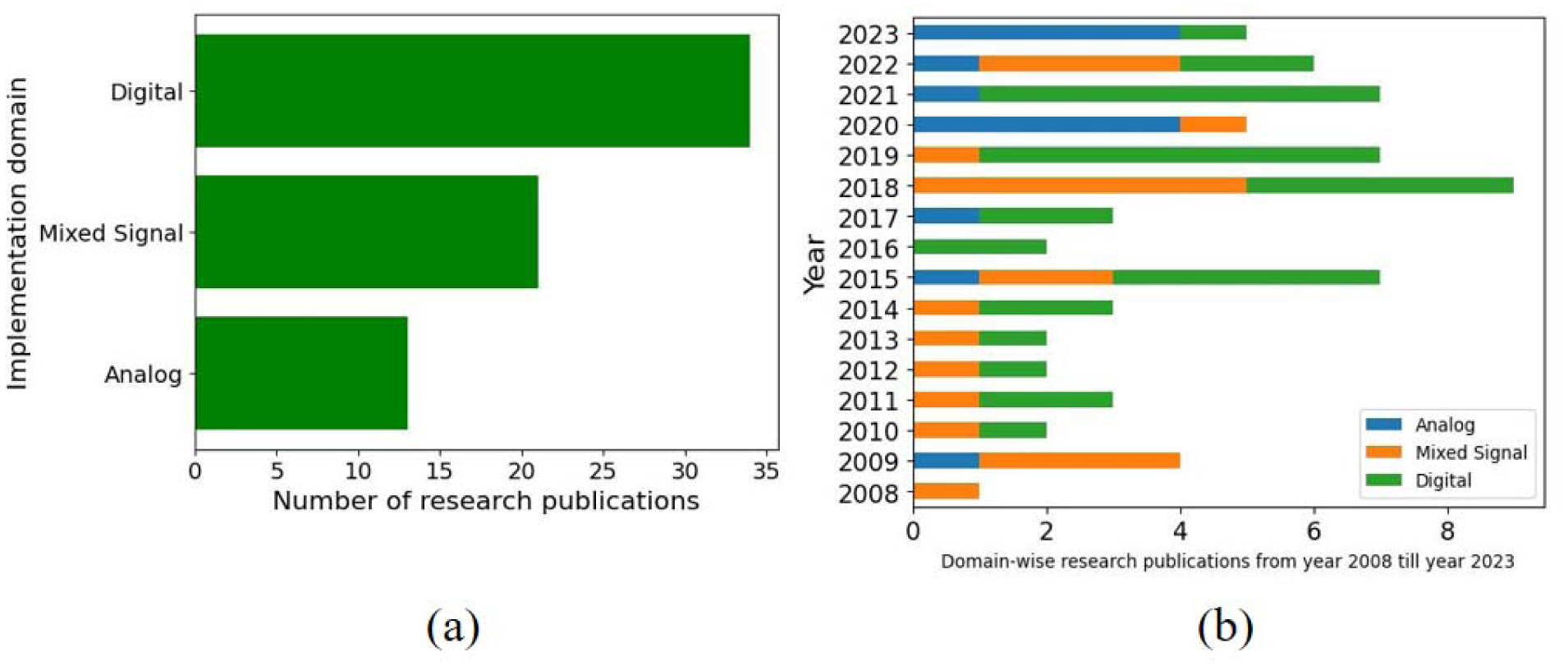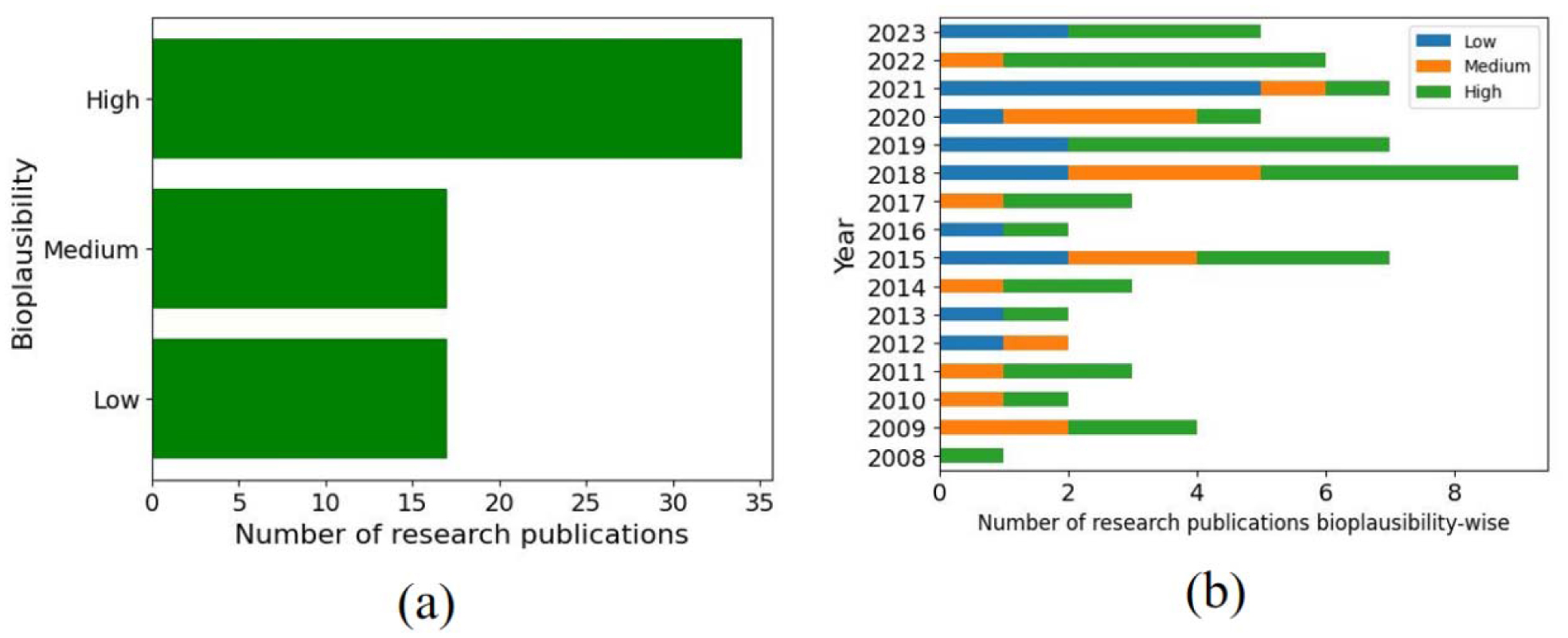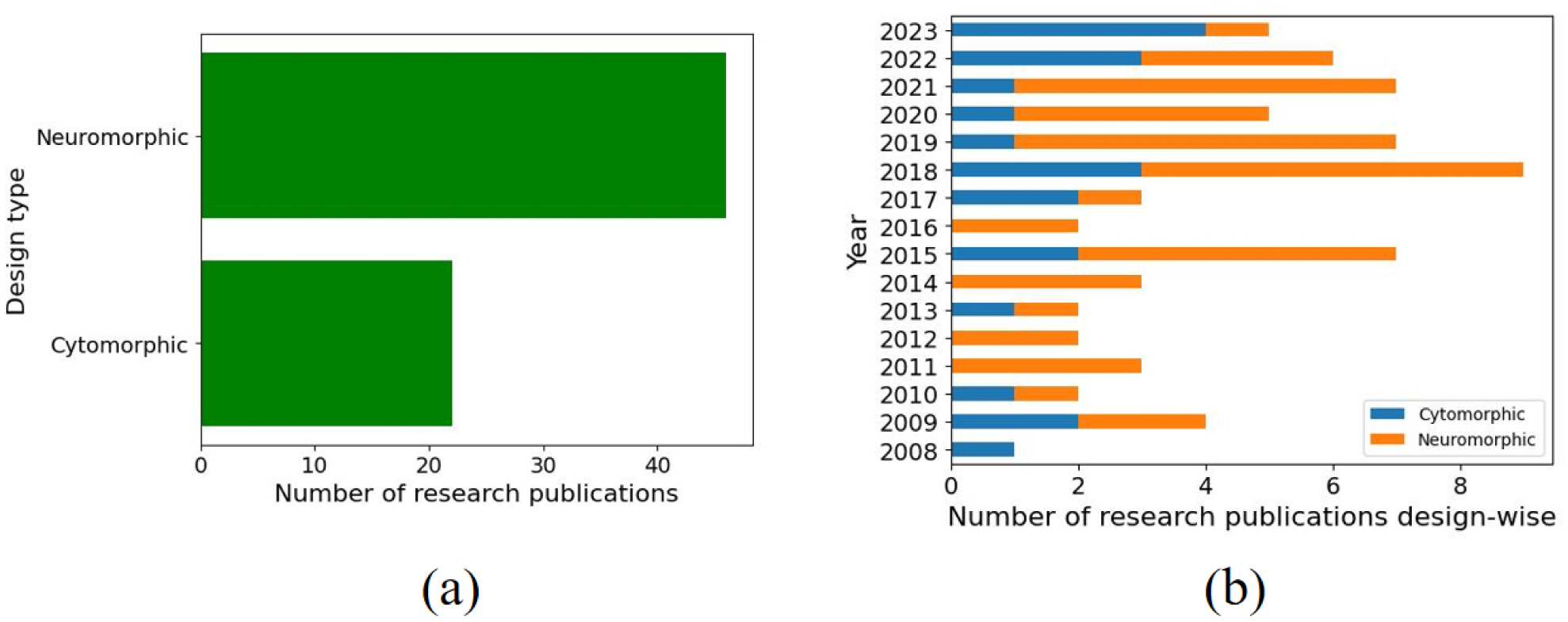1.
Introduction and preliminaries
Convex functions are very useful in diverse fields of mathematics, statistics, economics etc. They are especially important in the study of optimization problems where they are distinguished due to a number of appropriate properties. Convex functions serve as a model for generalizations and extensions of mathematical concepts [1,2]. Convex functions are defined as follows:
Definition 1. [3] A function f:I→R, where I is an interval in R, is said to be convex function, if the following inequality holds:
for all a,b∈I and t∈[0,1].
Convex functions have been generalized, refined and extended in various forms. A refinement appears in the form of the strongly convex functions, defined as follows:
Definition 2. [4,5] Let I be a nonempty convex subset of a normed space (X,||.||). A real valued function f is said to be strongly convex, with modulus λ>0, on I if for each a,b∈I and t∈[0,1]
Strongly convexity is a strengthening notion than convexity. A generalization of convex function defined on right half of real line is called s-convex function, defined as follows:
Definition 3. [6] Let s∈[0,1]. A function f:[0,∞)→R is said to be s-convex function in the second sense if
holds for all a,b∈[0,∞) and t∈[0,1].
An extension of a convex function on right half of real line is called m-convex function, defined as follows:
Definition 4. [7] A function f:[0,b]→R is said to be m-convex function, where m∈[0,1] and b>0, if for every x,y∈[0,b] and t∈[0,1] we have
Definition 5. [8] A function f:[0,+∞)→R is said to be strongly m-convex function with modulus λ if
with a,b∈[0,+∞), m∈[0,1] and λ>0.
Further generalizations of above functions in the form of (s,m)-convex function and strongly (s,m)-convex function, are defined as follows:
Definition 6. [9] A function f:[0,b]→R is said to be (s,m)-convex function, where (s,m)∈[0,1]2 and b>0, if for every x,y∈[0,b] and t∈[0,1] we have
Definition 7. [10] A function f:[0,+∞)→R is said to be strongly (s,m)-convex function with modulus λ>0, for (s,m)∈[0,1]2, if
holds for all a,b∈[0,+∞) and t∈[0,1].
In [9,11,12,13], the authors have studied the bounds of Riemann-Liouville and other well-known fractional integral operators involving Mittag-Leffler functions, for convex and related functions. The goal of this paper is to produce refinements of bounds of these fractional integral operators by applying strongly (s,m)-convexity. It is noted that in "G. Farid, S. B. Akbar, S. U. Rehman, J. Pečarić, Boundedness of fractional integral operators containing Mittag-Leffler functions via (s, m)-convexity, Aims Mathematics, 5 (2020), 966–978." the definition of (s,m)-convex function is not correctly stated, therefore the results of this paper have some errors. We will also give correct versions of results of this paper.
The Mittag-Leffler functions Eα(.) for one parameter is defined as follows[14].
where t,α∈C,ℜ(α)>0 and Γ(.) is the gamma function. It is a natural extension of exponential, hyperbolic and trigonometric functions. The Mittag-Leffler function and its extensions appear in the solutions of fractional integral equations and fractional differential equations. It was further explored by Wiman, Pollard, Humbert, Agarwal and Feller (see [15]). For detail study on the Mittag-Leffler function we refer the reader to [15,16,17,18,19].
The following extended generalized Mittag-Leffler function is introduced by Andrić et al.:
Definition 8. [20] Let μ,α,l,γ,c∈C, ℜ(μ),ℜ(α),ℜ(l)>0, ℜ(c)>ℜ(γ)>0 with p≥0, δ>0 and 0<k≤δ+ℜ(μ). Then the extended generalized Mittag-Leffler function Eγ,δ,k,cμ,α,l(t;p) is defined by:
where βp is defined by
and (c)nk=Γ(c+nk)Γ(c).
A derivative formula of the extended generalized Mittag-Leffler function is given in following lemma.
Lemma 1. [20] If m∈N,ω,μ,α,l,γ,c∈C,ℜ(μ),ℜ(α),ℜ(l)>0,ℜ(c)>ℜ(γ)>0 with p≥0,δ>0 and 0<k<δ+ℜ(μ), then
Remark 1. The extended Mittag-Leffler function (1.5) produces the related functions defined in [17,18,19,21,22] (see [23,Remark 1.3]).
Next, we give definition of the generalized fractional integral operator containing the extended generalized Mittag-Leffler function (1.5).
Definition 9 [20] Let ω,μ,α,l,γ,c∈C, ℜ(μ),ℜ(α),ℜ(l)>0, ℜ(c)>ℜ(γ)>0 with p≥0, δ>0 and 0<k≤δ+ℜ(μ). Let f∈L1[a,b] and x∈[a,b]. Then the generalized fractional integral operators containing Mittag-Leffler function are defined by:
Remark 2. The operators (1.7) and (1.8) produce in particular several kinds of known fractional integral operators (see [20], also [23,Remark 1.4]).
The classical Riemann-Liouville fractional integral operator is defined as follows:
Definition 10. [22] Let f∈ç1[a,b]. Then the Riemann-Liouville fractional integral operators of order α>0 are defined as follows:
It can be noted that (ϵγ,δ,k,cμ,α,l,0,a+f)(x;0)=Iαa+f(x) and (ϵγ,δ,k,cμ,α,l,0,b−f)(x;0)=Iαb−f(x). From the fractional integral operators (1.7) and (1.8), we have (see [24]):
The bounds of Riemann-Liouville fractional integrals of convex functions are given in the following theorem.
Theorem 1. [13] Let f:I⟶R be a positive convex function, a,b∈I;a<b and f∈L1[a,b]. Then for α,β≥1, the following inequality for Riemann-Liouville fractional integrals holds:
The bounds of fractional integrals (1.7) and (1.8) for s-convex functions are given in the following theorem.
Theorem 2. [11] Let f:[a,b]⟶R be a real valued function and f∈L1[a,b]. If f is positive and s-convex, then for α,β≥1, the following fractional integral inequality for generalized integral operators holds:
The bounds of fractional integrals (1.7) and (1.8) for convex functions can be obtained by putting s=1, which are given in [12,Corollary 1]. The bounds of Riemann-Liouville fractional integrals can be obtained by putting s=1,p=ω=0 in (1.14). In [11,12] fractional integrals (1.7) and (1.8) are also estimated in the form of Hadamard inequality and in a modulus inequality. Here we provide refinements of all the results proved in [9,11,12] along with corrected versions of results given in [9] for (s,m)-convex functions.
In the upcoming section refinements of the bounds of generalized fractional integral operators are established by using strongly (s,m)-convex functions. The results of [9] are correctly stated which appear in some special cases of presented results. Furthermore, the refinements of bounds of these operators are presented in Hadamard like inequality by using strongly (s,m)-convex functions. Also the results of this paper give refinements of some well-known inequalities.
2.
Main results
We use the extended generalized Mittag-Leffler function with the corresponding fractional integral operator in real domain. The first result provides an upper bound of sum of left and right fractional integrals for strongly (s,m)-convex functions on real domain.
Theorem 3. Let f∈L1[a,b],0≤a<b. If f is a positive and strongly (s,m)-convex function on [a,mb] with modulus λ>0, m∈(0,1], then for α,β≥1, the following fractional integral inequality for generalized integral operators (1.7) and (1.8) holds:
Proof. Let x∈[a,b]. Then for t∈[a,x) and α≥1, one can have the following inequality:
The function f is strongly (s,m)-convex function with modulus λ, therefore one can obtain
By multiplying (2.2) and (2.3) and then integrating over [a,x], we get
Therefore, the left fractional integral operator satisfies the following inequality:
Now, on the other hand for t∈(x,b] and β≥1, one can have the following inequality:
Again, from strongly (s,m)-convexity of f, we have
By multiplying (2.5) and (2.6) and then integrating over [x,b], we have
Therefore, we have that, the right integral operator satisfies the following inequality:
By adding (2.4) and (2.7), the required inequality (2.1) can be obtained.
Some particular cases are given in the following results:
Theorem 4. Let f∈L1[a,b],0≤a<b. If f is a positive and (s,m)-convex function on [a,mb], m∈(0,1], then for α,β≥1, the following fractional integral inequality for generalized integral operators (1.7) and (1.8) holds:
Proof. For (s,m)-convex functions the inequality (2.4) holds as follows (by setting λ=0):
Also, for (s,m)-convex functions the inequality (2.7) holds as follows (by setting λ=0):
By adding (2.9) and (2.10) the inequality (2.8) can be obtained.
Remark 3. The inequality (2.8) is the correct version of [9,Theorem 1]. The inequality (2.1) provides refinement of inequality (2.8).
Corollary 1. The following inequality holds for strongly convex functions by taking s=m=1 in (2.1):
Corollary 2. The following inequality holds for convex functions by taking s=m=1,λ=0 in (2.1) which is proved in [12,Corollary 1]:
Remark 4. The inequality (2.11) provides refinement of inequality (2.12).
Corollary 3. If we set α=β in (2.1), then the following inequality is obtained:
Corollary 4. If we set α=β and λ=0 in (2.1), then the following inequality is obtained for (s,m)-convex function:
Remark 5. The inequality (2.14) is the correct version of [9,Corollary 1]. The inequality (2.13) provides refinement of inequality (2.14).
Corollary 5. Along with assumptions of Theorem 1, if f∈L∞[a,b], then the following inequality is obtained:
Corollary 6. Along with assumptions of Theorem 1, if f∈L∞[a,b],λ=0, then the following inequality is obtained for (s,m)-convex function:
Remark 6. The inequality (2.16) is the correct version of [9,Corollary 2]. The inequality (2.15) provides refinement of inequality (2.16).
Corollary 7. For α=β in (2.15), we get the following result:
Corollary 8. For α=β,λ=0 in (2.15), we get the following result for (s,m)-convex function:
Remark 7. The inequality (2.18) is the correct version of [9,Corollary 3]. The inequality (2.17) provides refinement of inequality (2.18).
Corollary 9. For s=1 in (2.15), we get the following result:
Corollary 10. For s=1,λ=0 in (2.15), we get the following result for (s,m)-convex function:
Remark 8. The inequality (2.19) provides refinement of inequality (2.20).
Theorem 5. Let f∈L1[a,b],0≤a<b. If f is a differentiable and |f′| is a strongly (s,m)-convex function on [a,mb] with modulus λ>0, m∈(0,1], then for α,β≥1, the following fractional integral inequality for generalized integral operators (1.7) and (1.8) holds:
Proof. As x∈[a,b] and t∈[a,x), by using strongly (s,m)-convexity of |f′|, we have
From (2.22), one can have
The product of (2.2) and (2.23), gives the following inequality:
After integrating the above inequality over [a,x], we get
To compute the integral in the left-hand side of (2.25) we put x−t=z, that is t=x−z, and use the derivative property (1.6) of the Mittag-Leffler function, to obtain
Now, putting x−z=t, in the second term of the right hand side of the above equation and then using (1.7), we get
Therefore, (2.25) takes the following form:
Also, from (2.22), one can have
Following the same procedure as we did for (2.23), one can obtain:
From (2.26) and (2.28), we get
Now, we let x∈[a,b] and t∈(x,b]. Then by using strongly (s,m)-convexity of |f′| we have
On the same lines as we have done for (2.2), (2.23) and (2.27) one can get from (2.5) and (1.11), the following inequality:
From inequalities (2.29) and (2.31) via triangular inequality, (2.21) is obtained.
Theorem 6. Let f∈L1[a,b],0≤a<b. If f is a differentiable and |f′| is a (s,m)-convex function on [a,mb], m∈(0,1], then for α,β≥1, the following fractional integral inequality for generalized integral operators (1.7) and (1.8) holds:
Proof. For the (s,m)-convex function |f′| the inequality (2.29) holds as follows (by setting λ=0):
Also, for the (s,m)-convex function |f′| the inequality (2.31) holds as follows (by setting λ=0):
By adding (2.33) and (2.34), the inequality (2.32) can be obtained.
Remark 9. The inequality (2.32) is the correct version of [9,Theorem 3]. The inequality (2.21) provides refinement of inequality (2.32).
Corollary 11. If we put α=β in (2.21), then the following inequality is obtained:
Corollary 12. If we put α=β and λ=0 in (2.21), then the following inequality is obtained for (s,m)-convex function:
Remark 10. The inequality (2.36) is the correct version of [9,Corollary 5]. The inequality (2.35) provides refinement of inequality (2.36).
Corollary 13. If we put s=m=1 in (2.21), then the following inequality is obtained for strongly convex function:
Corollary 14. If we put s=m=1 and λ=0 in (2.21), then the following inequality is obtained for convex function which is proved in [12,Corollary 2]:
The following lemma is useful to prove the next result.
Lemma 2. Let f:[a,mb]→R be strongly (s,m)-convex function with modulus λ. If f(a+mb−xm)=f(x) and (s,m)∈[0,1]2, m≠0, then the following inequality holds:
Proof. As f is strongly (s,m)-convex function, we have
Let x=a(1−t)+mtb. Then we have a+mb−x=ta+m(1−t)b.
Hence, by using f(a+mb−xm)=f(x), the inequality (2.39) can be obtained.
Theorem 7. Let f∈L1[a,b],0≤a<b. If f is a positive and strongly (s,m)-convex function on [a,mb] with modulus λ>0, m∈(0,1] and f(a+mb−xm)=f(x), then for α,β≥0, the following fractional integral inequality for generalized integral operators (1.7) and (1.8) holds:
where
Proof. For x∈[a,b], we have
As f is strongly (s,m)-convex so for x∈[a,b], we have:
By multiplying (2.43) and (2.44) and then integrating over [a,b], we get
From which we have
that is
Now, on the other hand for x∈[a,b], we have
By multiplying (2.44) and (2.47) and then integrating over [a,b], we get
From which we have
that is
By adding (2.46) and (2.49), the second inequality of (2.42) is obtained. To prove the first inequality; multiplying (2.39) with (x−a)βEγ,δ,k,cμ,β+1,l(ω(x−a)μ;p) and integrating over [a,b], we get
By using (1.8), (1.11) and integrating by parts, we get
The integral operator appearing in the last term of the right hand side is calculated as follows:
i.e
By multiplying (2.39) with (b−x)αEγ,δ,k,cμ,α+1,l(ω(b−x)μ;p) and integrating over [a,b], also using (1.7) and(1.12), we get
The integral operator appearing in last term of right hand side is calculated as follows:
By using it in (2.52) then adding resulting inequality in (2.51), the first inequality of (2.42) can be obtained.
Theorem 8. Let f∈L1[a,b],0≤a<b. If f is a positive and (s,m)-convex function on [a,mb], m∈(0,1] and f(a+mb−xm)=f(x), then for α,β≥0, the following fractional integral inequality for generalized integral operators (1.7) and (1.8) holds:
Proof. For the (s,m)-convex function f the inequality (2.46) holds as follows (by setting λ=0):
Also, for the (s,m)-convex function f the inequality (2.49) holds as follows (by setting λ=0):
By adding (2.54) and (2.53), the second inequality in (2.53) can be obtained. For first inequality using (2.51) for λ=0 we have
Also, from (2.52) for λ=0 we have
From inequalities (2.56) and (2.57), the first inequality in (2.53) can be obtained.
Remark 11. The inequality (2.53) is the correct version of [9,Theorem 4]. The inequality (2.42) provides refinement of inequality (2.53).
If s=m=1 in (2.42), then the following result obtained for strongly convex function.
Corollary 15. Let f:[a,b]⟶R, 0≤a<b, be a real valued function. If f is a positive, strongly convex and f(a+b−x)=f(x), then for α,β>0, the following fractional integral inequality holds:
Remark 12. For λ=0 in (2.58) we get [12,Corollary 3]. Therefore (2.58) is the refinement of [12,Corollary 3].
3.
Conclusions
The presented results provide the refinements of the bounds of generalized fractional integral operators given in (1.7) and (1.8), by applying the definition of strongly (s,m)-convex functions. The results for strongly convexity give improvements of previously known results determined in [11,12,13]. In particular cases results for several known integral operators defined in [17,18,19,21,22] can be deduced. The method used in this paper for obtaining refinements of bounds of fractional integral operators can be extended for refinements of inequalities already exist in literature.
Acknowledgments
The work of Josip Pečarić is supported by the Ministry of Education and Science of the Russian Federation (the Agreement No. 02.a03.21.0008).
Conflict of interest
It is declared that authors have no competing interests.
Authors contribution
Ghulam Farid proposed the work with the consultation of Maja Andrić and Josip Pečarić, Maryam Saddiqa make calculations and verifications of results along with Chahn Yong Jung. Ultimately all authors have equal contributions. Further, all authors are agree for Chahn Yong Jung as corresponding author.
















 DownLoad:
DownLoad: